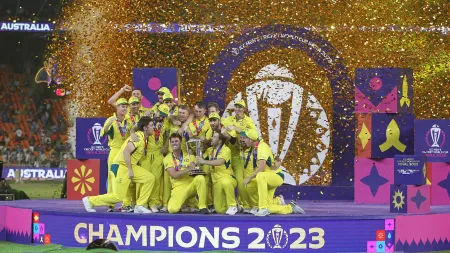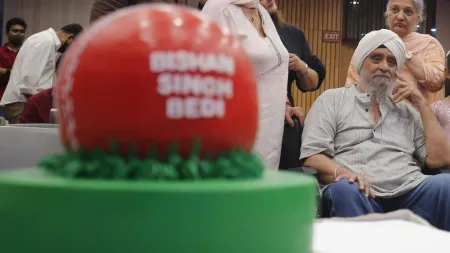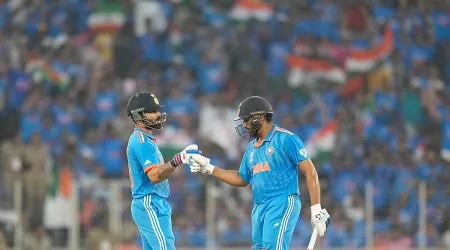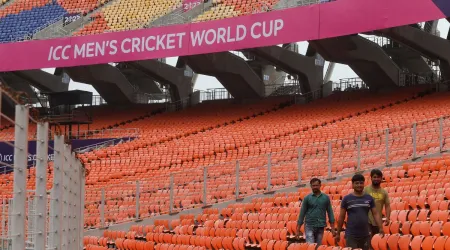- India
- International
India fail to cash in
Despite increased spending on hockey, the national team will slip down from its 2010 WC finish.
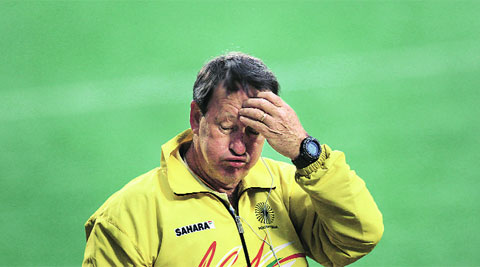 Chief coach Terry Walsh is paid $12,500 per month.
Chief coach Terry Walsh is paid $12,500 per month.
On a chilly January morning four years ago at the Balewadi Sports Complex, the then captain of the hockey team Rajpal Singh and nearly a dozen other players decided they had had enough.
The previous night had been spent embroiled in a closed-door meeting with the Hockey India officials, trying to strike a deal over months of non-payment of match fees and bonuses.
The players claimed they were due to receive nearly Rs3 lakh per head. The cash-strapped federation offered them a temporary settlement of Rs 25,000. Rajpal & Co went on an indefinite strike with the World Cup just a month away.
Fortunately, a last-minute deal was struck and the players agreed to resume training. India finished a lowly eighth, a result that was attributed to the ‘distractions’ in the lead-up to the tournament.
Fast forward to 2014 and the picture couldn’t be starker. A month before the ongoing World Cup in The Hague, the players were recovering from the hangover of playing in the cash-rich Hockey India League (HIL), where even uncapped Indian players made earning in lakhs. They had the luxury of travelling to Holland to get a feel of the newly-laid turf at the Kyocera Stadium.
Myth busted

Yet, it is certain that India will finish lower than where they did in the previous World Cup, where they finished eighth. For years, financial instability has been considered to be the bane of Indian hockey. It was argued that a player can’t just play for pride. However, the myth has been busted. Even though hockey is at its soundest state financially, the national team’s fortunes have plunged to newer depths.
Till 2010, hockey depended only on the government money apart from the paltry sum provided by chief sponsors Sahara. From 2008 to 2011, the government spent Rs28.51 crore on the sport and in the last three years, it has allocated roughly Rs 35 crore.
Last year, SAI had originally sanctioned Rs 6 crore but eventually spent double of that amount, keeping in line with the demands of the governing body.
This year, too, Hockey India asked SAI to sanction Rs 14 crore but they could grant only Rs 10.5 crore. It is learnt that the allotted budget will be exhausted by the time Commonwealth Games take place in July but Hockey India is confident of extracting more funds from the new government.
Hockey India, unlike several other Olympic sports federations, has attracted lucrative corporate sponsorships too. In 2012, Sahara hiked the sponsorship money by 170 percent (from Rs 3 crore annually for all teams to Rs 10 crore). This was followed by a deal with Cairn India (Rs 7 crore per annum) and Aircel (Rs 3.5 crore per annum).
Improved infrastructure
There is a marginal improvement in the infrastructure and facilities for the players too. From the GPS monitors to speed guns and software to analyze players’ performance, almost every modern technology is made available to the team.
Yet, there is no visible improvement.
In the last four years, the team hasn’t won a trophy of significance. The wooden-spoon at London Olympics, failure to earn a direct entry to the World Cup and an underwhelming performance at the quadrennial event are a few low-points. And even though the team finished fourth at the Champions Trophy in 2012, it was more because the rest of the field was depleted.
Two-time Olympian Jagbir Singh says the obsession with the national team and failure to invest in the grassroots is the main reason for the freefall.
“Today, the players are financially secure and the federation too is in a healthy state. However, we haven’t paid much attention to grassroots and developing bench strength. Today, the number of quality players in the side has reduced, which is evident in the way we play,” Jagbir says.
Jagbir has a point. There is no suitable replacement for skipper Sardar Singh or goalkeeper PR Sreejesh while the forward line is blunt. The developmental team has been scrapped and the quality of domestic hockey remains in abysmal shape.
Hockey India’s high performance director Roelant Oltmans has earlier said it will take at least five to six years to get Indian hockey back on track. “But for that we need to work on developing a talent pipeline. If we focus only on national team and pump in a lot of money, we won’t move forward,” Jagbir says.




















